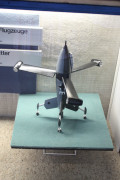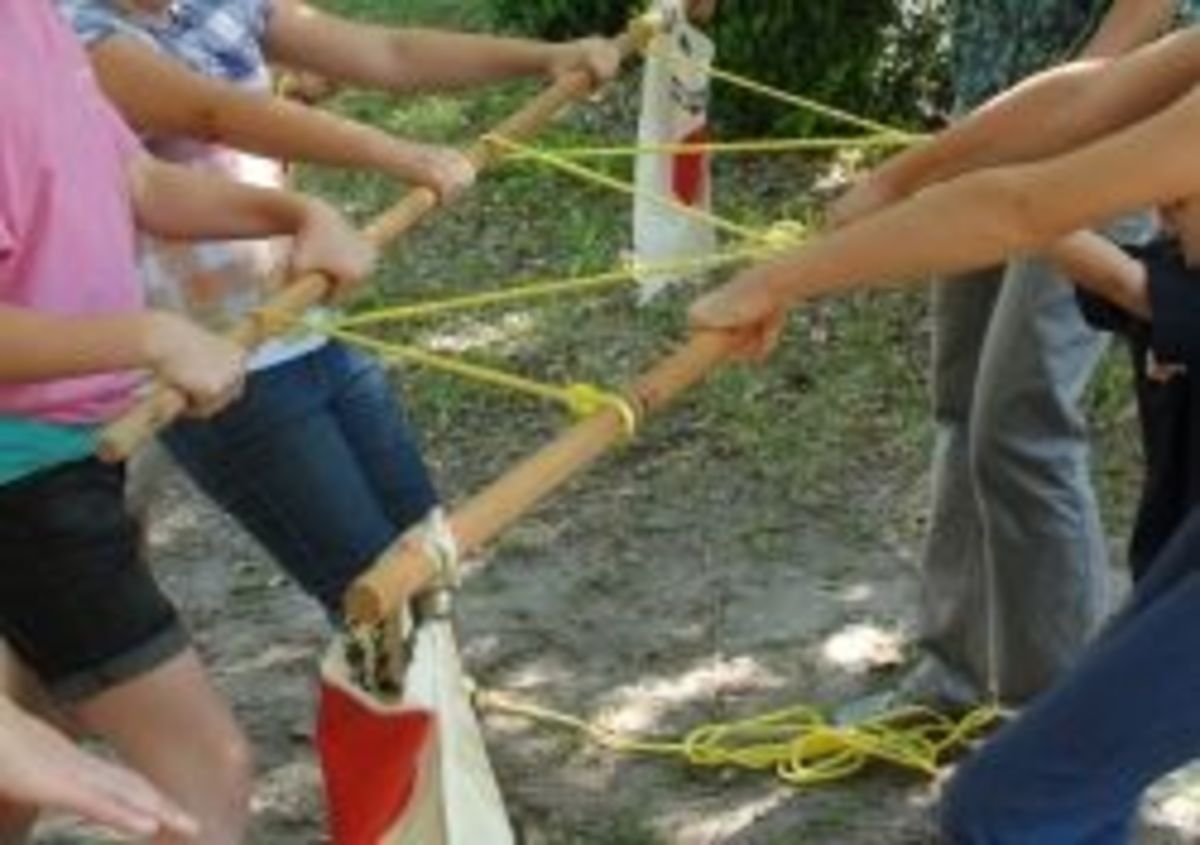Chemical Trajectory | Projectiles
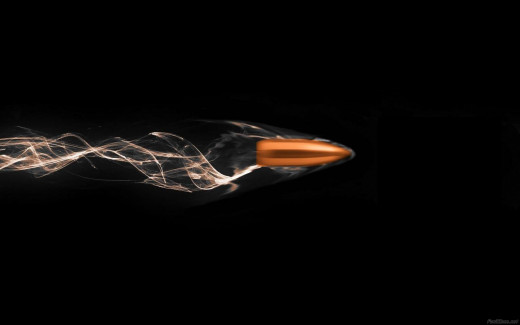
The Lone Gunman
A lone gunman positions himself to take a shot. He focuses his rife at a target 300yrds away, and then adjusts his .30-‘06 rifle to a 45° angle to compensate for the 250yrd incline. He then raises the cross hairs about 4’’ for the extra drop, and then raises the rifle 5’’ to offset the gravity due to the uphill angle of the target. The shooter takes a deep breath, lets it half out, and then he pulls the trigger.
This poses questions. Why go through all these calculation? Can’t someone just point a gun at a target, pull the trigger, and hit it? What many people do not realize is that in order for a projectile to hit a target there are hundreds of chemical and physical reactions it must undertake. Even an expert gunman would not necessarily understand them, yet a gunman will often use their principles from experience without knowing it. From the instant the hammer hits the cartridge, to when the bullet hits the target is only .003 of a second long (under these conditions and with a .30-’06 rife). This is a very short amount of time for all of these changes to occur.
To have a better understand of the process that occurs during that .003 of a second, one must understand the chemical processes that give a bullet its momentum and the physical forces that affect the bullets trajectory.
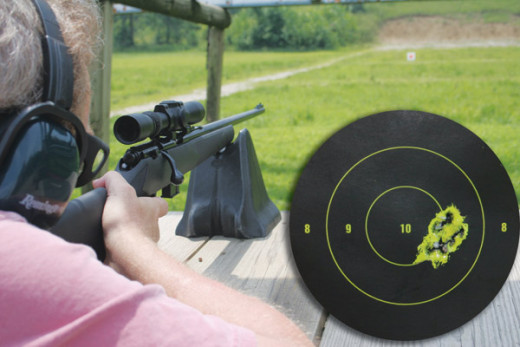
The Chemistry of Bullets
A gunman pulls the trigger and a bullet flies out the barrel in a split second. So the question is, how? What goes on in that very short period of time when the cartridge is hit to when the bullet leaves the barrel?
To understand this we have to get down to the basics. (many of the following numbers or proportions are noted under the assumption that the bullet used is a .308 Winchester) In order for the shot to exit the barrel there must be a force exerted, this force is seen in Newton’s second low of motion, “When a body is acted upon by a constant force, the resulting acceleration is inversely proportional to the mass of the body and is directly proportional to the applied force.”
The force that is used to expel the shot from the barrel is achieved through the use of gunpowder. Gunpowder is the propellant used and at a homogeneous mixture of “KNO3 at 74.0%, sulfur at 10.4%, and charcoal at 15.6%,” it is very flammable (23, Rinker). But this is just a portion of the material used, because in order for the gunpowder to light a primer must be used.
When the firing pin of the rifle hits the center of the case compressor (the extended bump at the back of the cartridge), it will ignite the primer which will then ignite the powder when the “flame passes through vents in the anvil”(19, Rinker). Primers used today consist mainly of “lead styphnate” and, depending on the manufacturer, a mixture of some of the following; “TNT, lead or copper sulphocyanide, lead peroxide, sulfur, tetryl, barium peroxide, and barium nitrate” (19, Rinker). The gunpowder, as a propellant, has “chemical energy” which is converted to move the projectile down the barrel.
This conversion involves three steps; chemically the propellant “converts or decomposes almost completely into a gas,” Thermodynamically the energy is “changed into heat which in turn creates motion-power,” and physically the “hot gas pushes the projectile, [then] it reacts to the friction and creates a [sic] recoil” that will force the rifle up and back against the shooter(21, Rinker). Once this process has occurred, it will cause a buildup of a great amount of pressure behind the bullet due to the expansion of the gases (the reaction does not cause an explosion, as some may believe). This gas will propel the bullet down the rifled interior of the barrel, which give the bullet spin, and out into the air.

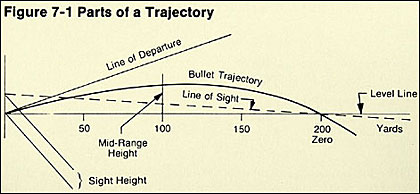
The Trajectory
The chemical aspect of shooting a rifle is only part of the equation. Now the bullet must make its way to the target. One thing that has to be understood about bullets is the fact that they do not move in a straight rate of velocity. The motion of a bullet is determined by the “continuous action of various forces,” such as the resistance of air and gravity on the projectile (66, Yeatts). Because of forces like these, a bullet moves in a trajectory (curved path of a projectile).
A gunman must adjust his site on the target to compensate for these forces. Our shooter adjusted his rifle so it was 5’’ higher than the target, and 4’’ on the cross hairs, this allowed for a total of 9’’ of drop. When the bullet heads toward the target, it will lose speed due to air resistance, and the bullet will drop due to the pull of gravity. Air resistance is less of a factor for a rifle than any other gun. When the bullet of a rife travels down the barrel, it will start to spin because the inside of the barrel is rifled (cut in a spiral to rotate the bullet). This rifled rotation will cut through a lot of air resistance and decrease drag. The compensation of 9’’ is done with the knowledge in mine that the air will slow the bullet down and the gravity will cause the bullet to drop, but when the gravity pulls the projector down, it will start to speed up to even faster than the initial speed. Therefore, the projectile will hit the target sooner than the initial speed of the projectile.
To break it down; the bullet exits the barrel and enters the “ascending branch” where the bullet will be moving up at its 45° angle, once it reaches the “maximum ordinance,” or summit, it will enter the “descending branch,” where the bullet will speed up and start to drop due to the force of gravity (69, Yeatts). While this seems to suggest that a projectile will move in a parabolic curve, it will not. The trajectory of a bullet will always have a steeper curve on descending due to the grip of gravity.
What is Gunpowder?
Knowledge of Firing a Gun
More to it then Pulling the Trigger
Shooting a rifle has a lot more to it then some may believe. The chemicals used create the beginning of a chain reaction. This reaction starts when the pin hits the case compressor which will ignite the primer, which will react with the gunpowder. This will cause the buildup of gas pressure which will send the bullet down the spiraled barrel and into its path of trajectory which will be affected by air and gravitational forces, so compensations are made to counter act them. These adjustments will allow for a trajectory path that will end with the target being struck. All being said and done the final question is, while the shooter hit the target? The shooter makes all of the correct adjustments in order to hit a target that was 300yrds away, with an incline of 250yrds. Therefore, the answer is yes. The shooter will hit the target, as long as there are no unexpected cross winds present.


